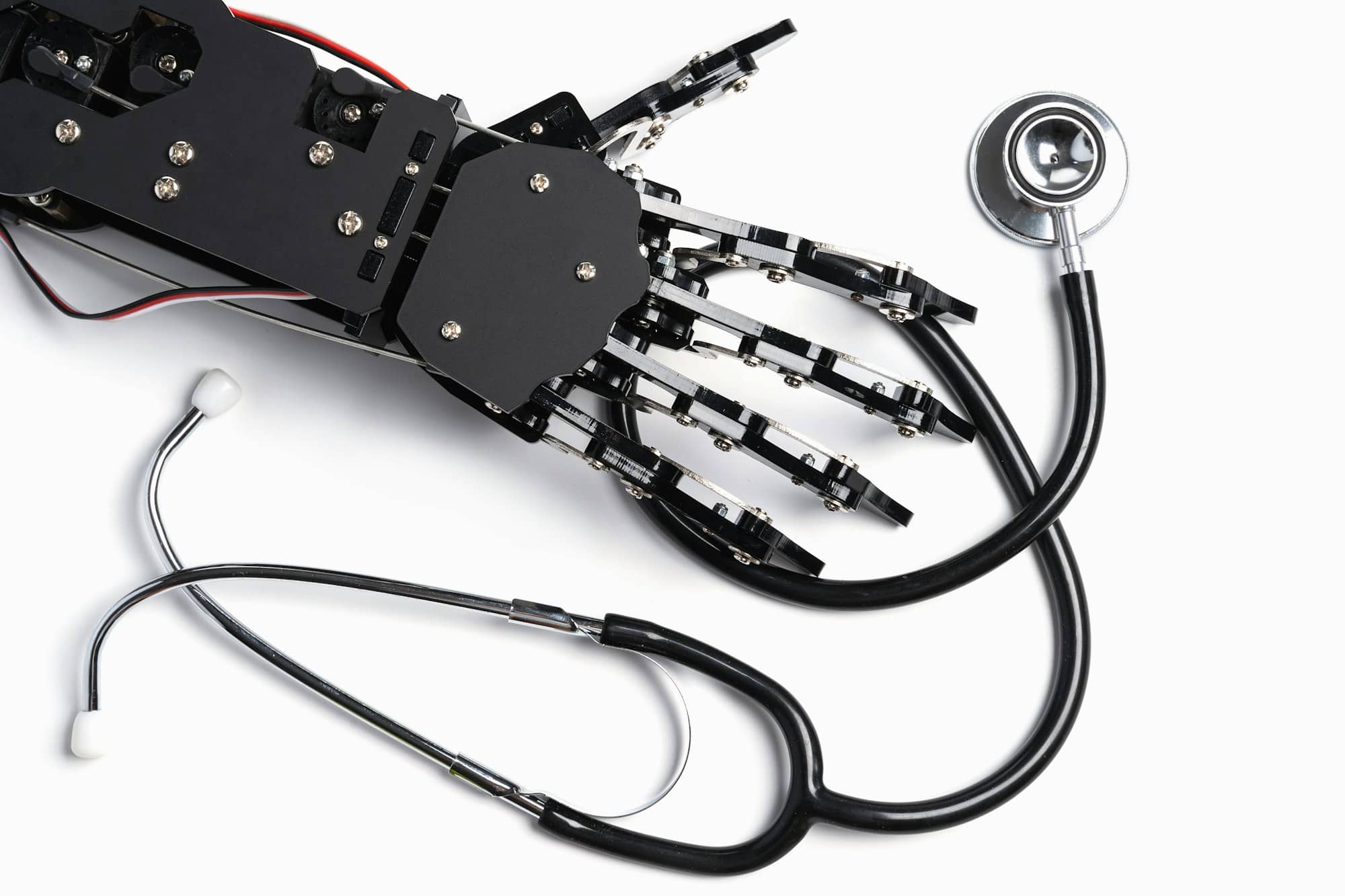With the rise of digital technology, the healthcare industry is witnessing a revolution in patient care, and stethoscopes, the age-old device used by doctors to examine patients, are no exception. Today, digital stethoscopes are gaining popularity, and their use is rapidly extending beyond traditional healthcare settings. These stethoscopes offer numerous advantages, such as improved sound quality and remote auscultation, which can significantly enhance the detection and treatment of respiratory illnesses, particularly in remote areas.
The Evolution of the Stethoscope
Long a symbol of the medical profession, the stethoscope has experienced a significant transformation since its invention in the early 19th century. The advent of digital stethoscopes promises a new era in healthcare, especially for patients living in remote areas.
Avez-vous vu cela : How Are Augmented Reality Manuals Transforming DIY Home Repair and Maintenance?
Digital stethoscopes, like those offered by Minttihealth, capture sounds from the body and convert them into digital signals. These signals can be amplified, filtered and even recorded for future reference. With the added advantage of wireless technology, these stethoscopes can transmit the sounds to a remote location, facilitating telemedicine and remote auscultation.
Healthcare providers can listen to these sounds and diagnose various conditions, especially respiratory illnesses, which are often characterized by abnormal sounds in the lungs. By using digital stethoscopes, doctors can identify and treat these conditions at an earlier stage, which can significantly improve patient outcomes.
A lire en complément : What Is the Role of AI in Streamlining E-commerce Logistics During Peak Season?
The Sound of Illness: Auscultation in Modern Healthcare
Auscultation, the act of listening to internal body sounds, is a fundamental diagnostic tool in healthcare. With the help of stethoscopes, healthcare providers can detect abnormalities in a patient’s lungs, heart, and other organs. However, traditional stethoscopes often fall short when it comes to accurately identifying subtle changes in these sounds.
The advent of digital stethoscopes is changing this scenario. These devices can enhance sounds and filter out ambient noise, thereby enabling healthcare providers to detect subtle changes in lung sounds, such as crackles and wheezes, which are often indicative of respiratory illnesses.
Furthermore, unlike traditional stethoscopes, digital devices can record and store sounds, allowing for comparison over time. This feature can be particularly beneficial in tracking the progression of a disease or monitoring the effectiveness of a treatment.
Remote Healthcare with Digital Stethoscopes
Digital stethoscopes not only improve the sound quality of auscultation but also extend the reach of healthcare providers. The remote auscultation feature of these stethoscopes can open up new possibilities for patients living in remote areas, who often struggle to access quality healthcare.
With the help of digital stethoscopes, healthcare providers can listen to a patient’s lung sounds from a distance, thereby facilitating telemedicine. This feature makes it possible for patients in remote areas to receive timely and appropriate care without having to travel long distances.
Digital stethoscope data can be easily shared with specialists anywhere in the world, enabling collaborative care. This aspect can significantly enhance the quality of healthcare delivered to patients in remote areas.
Scholarly Evidence: The Role of Digital Stethoscopes
The potential benefits of digital stethoscopes in improving the early detection of respiratory illnesses have been widely recognized by scholars. A growing body of research available on databases such as PubMed and Crossref attests to their effectiveness.
Several scholarly studies have shown that digital stethoscopes provide superior sound quality compared to their traditional counterparts. This advantage can significantly improve the accuracy and confidence of healthcare providers in diagnosing respiratory illnesses.
Moreover, scholars have also highlighted the potential of digital stethoscopes in remote healthcare. Telemedicine, facilitated by these devices, can ensure timely access to care for patients in remote areas, potentially reducing the severity and impact of respiratory illnesses.
Future Projections: The Impact of Digital Stethoscopes
As digital stethoscopes continue to gain traction, their impact on healthcare, particularly in remote areas, is expected to be significant. The ability to detect subtle changes in lung sounds can lead to early diagnosis and treatment of respiratory illnesses, potentially reducing their severity and impact.
Moreover, the potential of digital stethoscopes in telemedicine is vast. As telemedicine continues to evolve, the role of these devices in facilitating access to quality healthcare in remote areas is likely to increase.
As the healthcare landscape continues to evolve, digital stethoscopes are set to play a pivotal role in enhancing patient care. By leveraging the capabilities of these devices, healthcare providers can significantly improve the early detection and treatment of respiratory illnesses, particularly in remote areas, thereby contributing to a healthier future.
Deep Learning and Digital Stethoscopes: A Glimpse into Future Possibilities
Deep learning, a subset of artificial intelligence, has already proved its potential in various fields, including healthcare. When applied to the realm of digital stethoscopes, it can further revolutionize the diagnosis and management of respiratory illnesses.
Digital stethoscopes like Mintti Smartho, equipped with enhanced technology, capture lung and heart sounds more accurately than traditional stethoscopes. When combined with deep learning algorithms, these devices can analyze these sounds to detect possible abnormalities, aiding in early diagnosis of respiratory conditions.
Deep learning algorithms can be trained to recognize abnormal lung sounds, such as wheezes and crackles, which are often indicative of respiratory illnesses. When integrated with a digital stethoscope, these algorithms can analyze the recorded sounds in real time, providing immediate feedback to healthcare professionals.
In addition to real-time analysis, deep learning can also be used for patient monitoring over time. By comparing current lung sounds with previous recordings, these algorithms can detect subtle changes and track the progression of a disease.
The application of deep learning in digital stethoscopes also holds great promise for remote patient monitoring. In remote areas, where access to healthcare professionals is limited, these digital tools can transmit lung sounds to a remote server for analysis, providing patients with timely feedback.
Conclusions: Digital Stethoscopes – A Path to Better Respiratory Health
The advent of digital stethoscopes, combined with advancements in technology such as deep learning, holds great promise for enhancing early detection and management of respiratory illnesses, especially in remote areas.
A review of available articles on PubMed and Crossref reveals the effectiveness of digital stethoscopes in diagnosing respiratory conditions. Many free articles and PMC free resources also highlight the potential of these electronic devices in remote patient monitoring.
As digital stethoscopes continue to evolve, healthcare providers can leverage these tools to detect subtle changes in lung auscultation sounds, leading to early diagnosis and treatment. The ability of these devices to record and analyze lung sounds in real time can greatly aid patient monitoring, especially for those residing in remote areas.
Moreover, the combination of digital stethoscopes and deep learning can further enhance their capabilities. By training deep learning algorithms to recognize abnormal respiratory sounds, these devices can provide immediate feedback to healthcare professionals, thus improving the accuracy and speed of diagnosis.
As the healthcare landscape continues to change, digital stethoscopes are set to play a pivotal role. By leveraging the potential of these devices, we can move towards a healthier future, particularly for those in remote areas, where access to quality healthcare is often a challenge.






